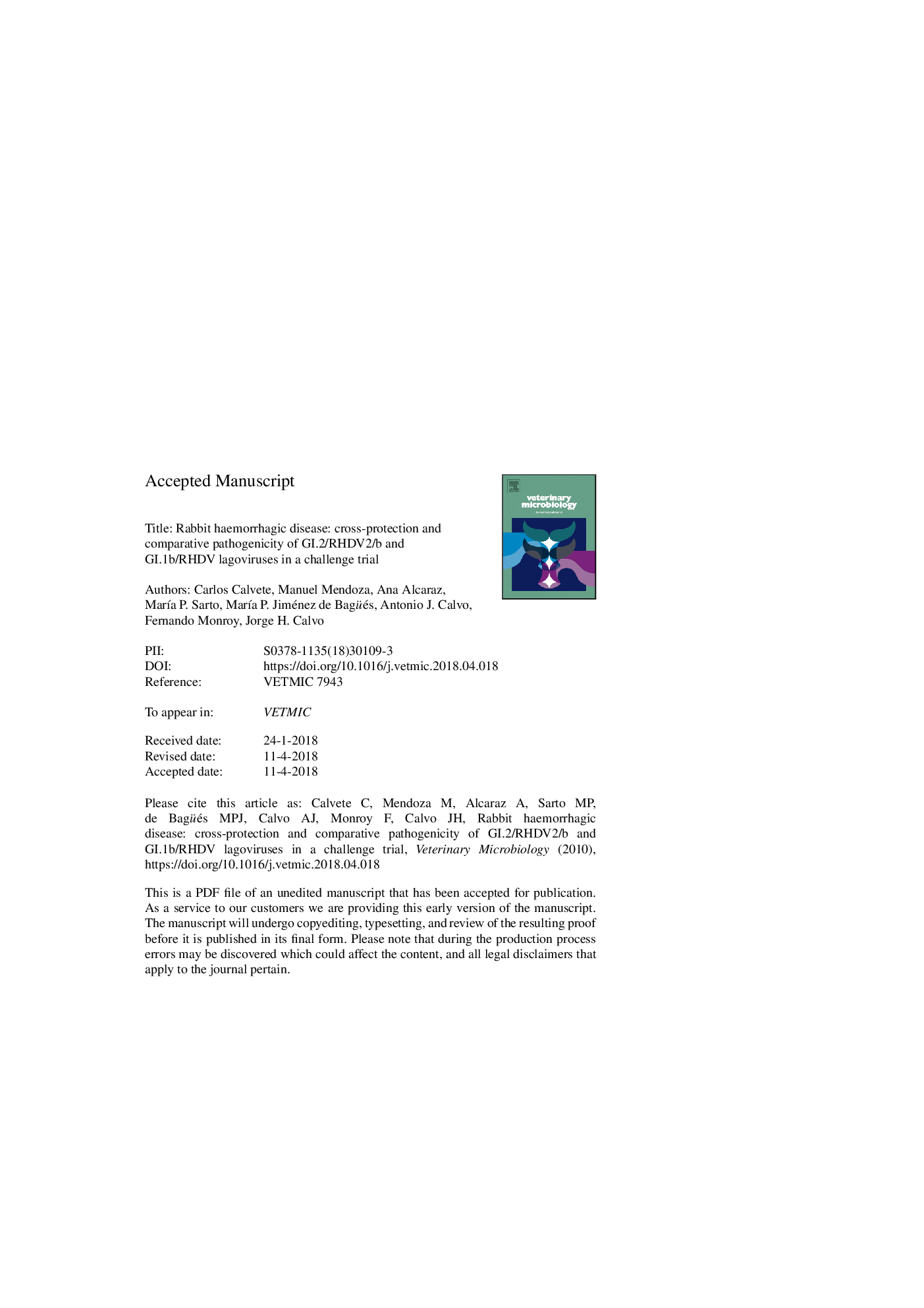| Article ID | Journal | Published Year | Pages | File Type |
|---|---|---|---|---|
| 8505339 | Veterinary Microbiology | 2018 | 39 Pages |
Abstract
European rabbits (Oryctolagus cuniculus) are severely affected by rabbit haemorrhagic disease (RHD). Caused by a lagovirus, the disease leads to losses in the rabbit industry and has implications for wildlife conservation. Past RHD outbreaks have been caused by GI.1/RHDV genotype viruses. A new virus belonging to the GI.2/RHDV2/b genotype emerged in 2010, quickly spreading and replacing the former in several countries; however, limited data are available on its pathogenicity and epidemiological factors. The present work extends these issues and evaluates cross-protection between both genotypes. Ninety-four and 88 domestic rabbits were challenged with GI.2/RHDV2/b and GI.1b/RHDV variant isolates, respectively. Cross-protection was determined by a second challenge on survivors with the corresponding strain. Mortality by GI.2/RHDV2/b was highly variable due to unknown individual factors, whereas mortality by GI.1b/RHDV was associated with age. Mortality in rabbitsâ¯<â¯4 weeks old was 84%, higher than previously reported. Cross-protection was not identical between the two viruses because the ratio of mortality rate ratios for the first and second challenges was 3.80â¯Â±â¯2.68 times higher for GI.2/RHDV2/b than it was for GI.1b/RHDV. Rabbit susceptibility to GI.2/RHDV2/b varied greatly and appeared to be modulated by the innate functionality of the immune response and/or its prompt activation by other pathogens. GI.1b/RHDV pathogenicity appeared to be associated with undetermined age-related factors. These results suggest that GI.2/RHDV2/b may interact with other pathogens at the population level but does not satisfactorily explain the GI.1b/RHDV virus's quick replacement.
Related Topics
Life Sciences
Agricultural and Biological Sciences
Animal Science and Zoology
Authors
Carlos Calvete, Manuel Mendoza, Ana Alcaraz, MarÃa P. Sarto, MarÃa P. Jiménez-de-Bagüéss, Antonio J. Calvo, Fernando Monroy, Jorge H. Calvo,
